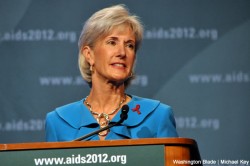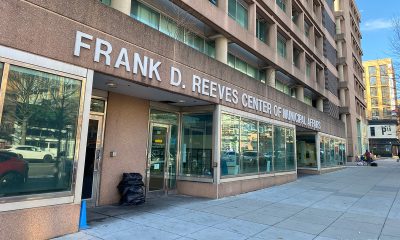National
LGBT-inclusive national suicide strategy unveiled
Discriminatory laws, ‘minority stress’ shown to contribute to LGBT suicide rate
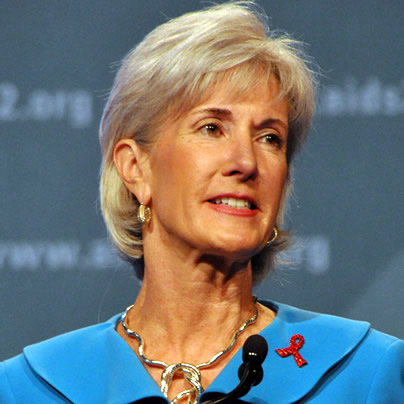
A new strategy unveiled Monday aimed at reducing the suicide rate in the United States includes a section on the rate of suicide for LGBT people — saying they may be particularly at risk because of “minority stress” and “institutional discrimination” resulting from anti-gay laws on the books.
The 2012 National Strategy for Suicide Prevention, made public on World Suicide Prevention Day, was published by the National Action Alliance for Suicide Prevention and U.S. Surgeon General Regina Benjamin. Secretary of Health & Human Services Kathleen Sebelius and former Defense Secretary of Robert Gates launched the alliance in late 2010 in part to address the suicide rate among Iraq and Afghanistan veterans returning home.
The strategy details multiple goals for reducing suicide, such as integrating suicide prevention into health care policies and changing the way the public talks about suicide and suicide prevention. In addition to veterans, the study identifies particular groups that may face a higher suicide rate, such as individuals with mental and substance abuse disorders, individuals in justice or child welfare settings and LGBT people.
Andrew Lane, a gay member of the Action Alliance’s executive committee, said the strategy lays the groundwork to reduce the suicide rate among LGBT people.
“The 2012 NSSP represents a significant step forward in our ongoing efforts to highlight the unique health needs of the LGBT community and ensure government responsiveness,” said Lane, who’s also executive director of the Johnson Family Foundation.
The strategy attributes the prevalence of suicide in the LGBT community to “minority stress” stemming from cultural stigma as well as “institutional discrimination” that comes from laws that deny benefits and protections for LGBT people that are provided to others.
“These negative outcomes, rather than minority sexual orientation or gender identity per se, appear to be the key risk factors for LGBT suicidal ideation and behavior,” the strategy states. “An additional risk factor is contagion resulting from media coverage of LGBT suicide deaths that presents suicidal behavior as a normal, rational response to anti-LGBT bullying or other experiences of discrimination.”
Among the factors that the strategy has found that reduce suicides among LGBT youth are family acceptance and access to mental health treatment. The Action Alliance also recommends reducing LGBT-related prejudices and associated stressors, improving access to LGBT-affirming treatment, working to reduce bullying and eliminating discriminatory laws. Notably, the strategy makes no mention of any particular discriminatory law against LGBT people that should be eliminated.
In a statement, Sebelius hailed the strategy as means to help organizations’ work in preventing suicides throughout the country.
“Our message today is one of hope,” Sebelius said. “The national strategy will bring together the nation’s resources, both public and private, in an organized effort to provide life saving services and improve the ability of individuals, friends and family members to recognize the warning signs of despair and take action to save lives.”
Sebelius announced HHS would provide $55.6 million in new grants for national, state, tribal, campus and community suicide prevention efforts, which were made possible under the Garrett Lee Smith Memorial Act and the Affordable Care Act. The Department of Veterans Affairs is launching a new outreach campaign called “Stand by Them: Help a Veteran.”
According to the strategy, whether LGBT people have a higher suicide rate than others is unknown because sexual orientation or gender identity isn’t recorded upon the death of an individual. However, the strategy does say studies indicate suicide ideation and attempts are higher for LGBT people.
“A meta-analysis of 25 international population-based studies found the lifetime prevalence of suicide attempts in gay and bisexual male adolescents and adults was four times that of comparable heterosexual males,” the strategy states. “Lifetime suicide attempt rates among lesbian and bisexual females were almost twice those of heterosexual females.”
The strategy makes particular note of the rate of suicide among LGBT youth. An analysis of studies found that LGB youth were three times more likely to report a lifetime attempt than straight youth, and more four times more likely to report a medically serious attempt.
A note of suicide among transgender people, saying population-based studies haven’t yet included transgender participants, but non-random surveys show the problem particularly affects transgender people. A 2009 study from the National Gay & Lesbian Task Force force found that 41 percent of adult respondents reported suicide attempts.
Michael Cole-Schwartz, a spokesperson for the Human Rights Campaign, praised the strategy.
“We applaud the National Strategy for Suicide Prevention and the efforts underway to improve the health and well-being of LGBT people – particularly youth that need to know there are people out there ready and willing to help them,” Cole-Schwartz said. “With public and private resources coming together this is a positive step toward lessening tragic deaths by suicide.”
It’s not the first time a national strategy has been issued to address the problem of suicide in the country, nor is it the first one to address the trend of suicide among LGBT youth. In the 2001, HHS under the direction of the Bush administration’s Surgeon General David Satcher unveiled a similar study about the national suicide rate that includes a paragraph addressing LGBT suicide. But this earlier strategy isn’t as detailed people for LGBT people, nor does it contain any explicit reference to suicide rates among transgender people.
U.S. Federal Courts
Second federal lawsuit filed against White House passport policy
Two of seven plaintiffs live in Md.
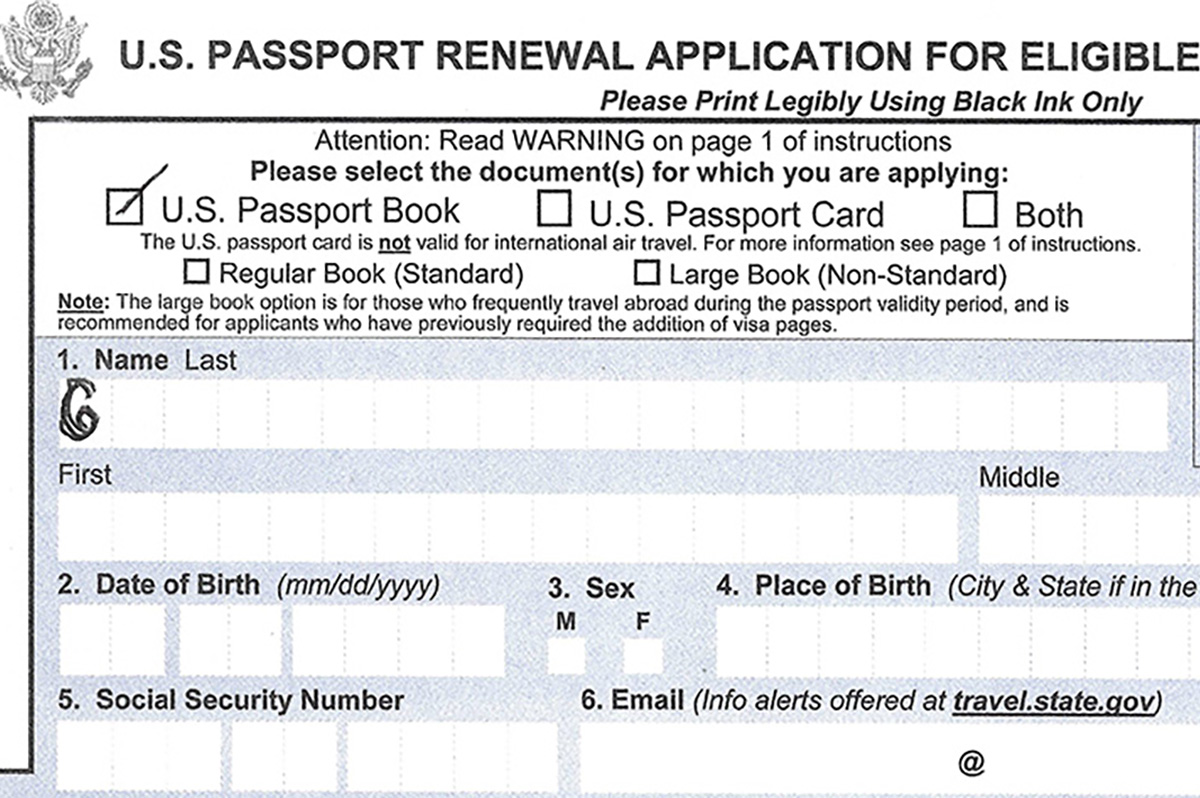
Lambda Legal on April 25 filed a federal lawsuit on behalf of seven transgender and nonbinary people who are challenging the Trump-Vance administration’s passport policy.
The lawsuit, which Lambda Legal filed in U.S. District Court for the District of Maryland in Baltimore, alleges the policy that bans the State Department from issuing passports with “X” gender markers “has caused and is causing grave and immediate harm to transgender people like plaintiffs, in violation of their constitutional rights to equal protection.”
Two of the seven plaintiffs — Jill Tran and Peter Poe — live in Maryland. The State Department, Secretary of State Marco Rubio, and the federal government are defendants.
“The discriminatory passport policy exposes transgender U.S. citizens to harassment, abuse, and discrimination, in some cases endangering them abroad or preventing them from traveling, by forcing them to use identification documents that share private information against their wishes,” said Lambda Legal in a press release.
Zander Schlacter, a New York-based textile artist and designer, is the lead plaintiff.
The lawsuit notes he legally changed his name and gender in New York.
Schlacter less than a week before President Donald Trump’s inauguration “sent an expedited application to update his legal name on his passport, using form DS-5504.”
Trump once he took office signed an executive order that banned the State Department from issuing passports with “X” gender markers. The lawsuit notes Schlacter received his new passport in February.
“The passport has his correct legal name, but now has an incorrect sex marker of ‘F’ or ‘female,'” notes the lawsuit. “Mr. Schlacter also received a letter from the State Department notifying him that ‘the date of birth, place of birth, name, or sex was corrected on your passport application,’ with ‘sex’ circled in red. The stated reason was ‘to correct your information to show your biological sex at birth.'”
“I, like many transgender people, experience fear of harassment or violence when moving through public spaces, especially where a photo ID is required,” said Schlacter in the press release that announced the lawsuit. “My safety is further at risk because of my inaccurate passport. I am unwilling to subject myself and my family to the threat of harassment and discrimination at the hands of border officials or anyone who views my passport.”
Former Secretary of State Antony Blinken in June 2021 announced the State Department would begin to issue gender-neutral passports and documents for American citizens who were born overseas.
Dana Zzyym, an intersex U.S. Navy veteran who identifies as nonbinary, in 2015 filed a federal lawsuit against the State Department after it denied their application for a passport with an “X” gender marker. Zzyym in October 2021 received the first gender-neutral American passport.
Lambda Legal represented Zzyym.
The State Department policy took effect on April 11, 2022.
Trump signed his executive order shortly after he took office in January. Germany, Denmark, Finland, and the Netherlands are among the countries that have issued travel advisories for trans and nonbinary people who plan to visit the U.S.
A federal judge in Boston earlier this month issued a preliminary injunction against the executive order. The American Civil Liberties Union filed the lawsuit on behalf of seven trans and nonbinary people.
Federal Government
HHS to retire 988 crisis lifeline for LGBTQ youth
Trevor Project warns the move will ‘put their lives at risk’

The U.S. Department of Health and Human Services is planning to retire the national 988 crisis lifeline for LGBTQ youth on Oct. 1, according to a preliminary budget document obtained by the Washington Post.
Introduced during the Biden-Harris administration in 2022, the hotline connects callers with counselors who are trained to work with this population, who are four times likelier to attempt suicide than their cisgender or heterosexual counterparts.
“Suicide prevention is about risk, not identity,” said Jaymes Black, CEO of the Trevor Project, which provides emergency crisis support for LGBTQ youth and has contracted with HHS to take calls routed through 988.
“Ending the 988 Suicide and Crisis Lifeline’s LGBTQ+ youth specialized services will not just strip away access from millions of LGBTQ+ kids and teens — it will put their lives at risk,” they said in a statement. “These programs were implemented to address a proven, unprecedented, and ongoing mental health crisis among our nation’s young people with strong bipartisan support in Congress and signed into law by President Trump himself.”
“I want to be clear to all LGBTQ+ young people: This news, while upsetting, is not final,” Black said. “And regardless of federal funding shifts, the Trevor Project remains available 24/7 for anyone who needs us, just as we always have.”
The service for LGBTQ youth has received 1.3 million calls, texts, or chats since its debut, with an average of 2,100 contacts per day in February.
“I worry deeply that we will see more LGBTQ young people reach a crisis state and not have anyone there to help them through that,” said Janson Wu, director of advocacy and government affairs at the Trevor Project. “I worry that LGBTQ young people will reach out to 988 and not receive a compassionate and welcoming voice on the other end — and that will only deepen their crisis.”
Under Trump’s HHS secretary, Robert F. Kennedy, Jr., the agency’s departments and divisions have experienced drastic cuts, with a planned reduction in force of 20,000 full-time employees. The Substance Abuse and Mental Health Services Administration has been sunset and mental health services consolidated into the newly formed Administration for a Healthy America.
The budget document reveals, per Mother Jones, “further sweeping cuts to HHS, including a 40 percent budget cut to the National Institutes of Health; elimination of funding for Head Start, the early childhood education program for low-income families; and a 44 percent funding cut to the Centers for Disease Control, including all the agency’s chronic disease programs.”
U.S. Supreme Court
Supreme Court hears oral arguments in LGBTQ education case
Mahmoud v. Taylor plaintiffs argue for right to opt-out of LGBTQ inclusive lessons
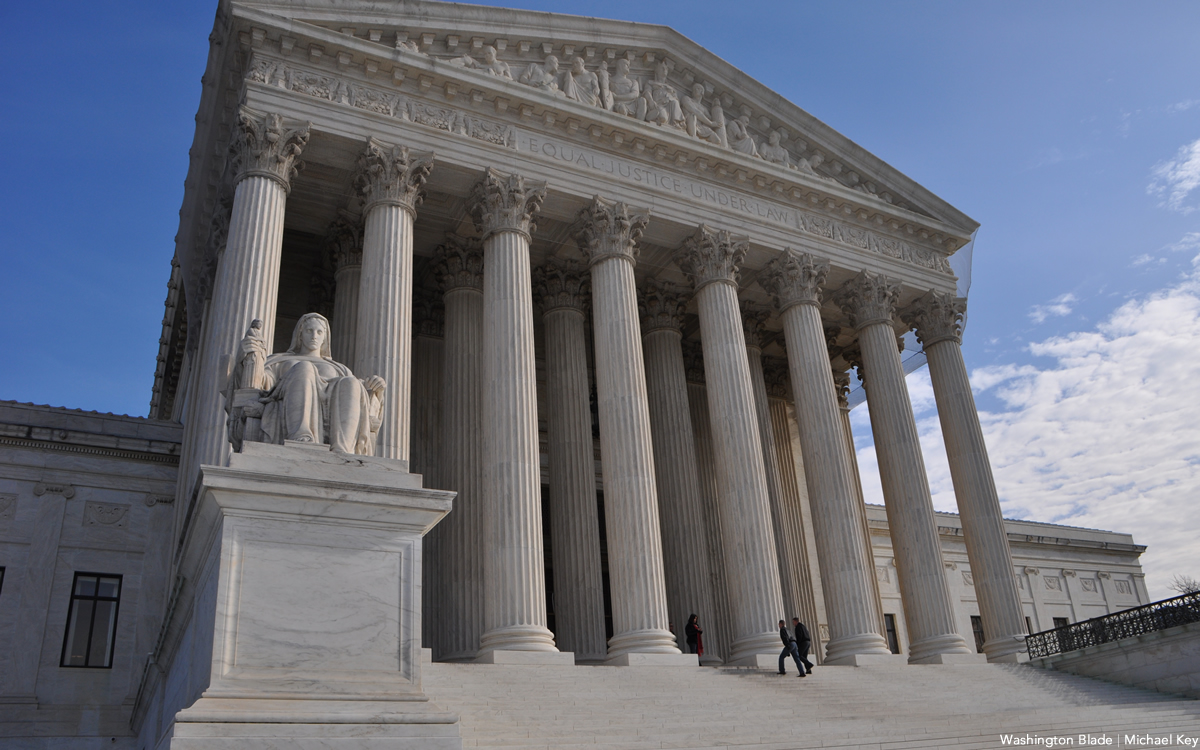
The U.S. Supreme Court on Tuesday heard oral arguments in Mahmoud v. Taylor, a case about whether Montgomery County, Md., public schools violated the First Amendment rights of parents by not providing them an opportunity to opt their children out of reading storybooks that were part of an LGBTQ-inclusive literacy curriculum.
The school district voted in early 2022 to allow books featuring LGBTQ characters in elementary school language arts classes. When the county announced that parents would not be able to excuse their kids from these lessons, they sued on the grounds that their freedom to exercise the teachings of their Muslim, Jewish, and Christian faiths had been infringed.
The lower federal courts declined to compel the district to temporarily provide advance notice and an opportunity to opt-out of the LGBTQ inclusive curricula, and the 4th U.S. Circuit Court of Appeals determined that the parents had not shown that exposure to the storybooks compelled them to violate their religion.
“LGBTQ+ stories matter,” Human Rights Campaign President Kelley Robinson said in a statement Tuesday. “They matter so students can see themselves and their families in the books they read — so they can know they’re not alone. And they matter for all students who need to learn about the world around them and understand that while we may all be different, we all deserve to be valued and loved.”
She added, “All students lose when we limit what they can learn, what they can read, and what their teachers can say. The Supreme Court should reject this attempt to silence our educators and ban our stories.”
GLAD Law, NCLR, Family Equality, and COLAGE submitted a 40-page amicus brief on April 9, which argued the storybooks “fit squarely” within the district’s language arts curriculum, the petitioners challenging the materials incorrectly characterized them as “specialized curriculum,” and that their request for a “mandated notice-and-opt-out requirement” threatens “to sweep far more broadly.”
Lambda Legal, the Leadership Conference on Civil and Human Rights, PFLAG, and the National Women’s Law Center announced their submission of a 31-page amicus brief in a press release on April 11.
“All students benefit from a school climate that promotes acceptance and respect,” said Karen Loewy, senior counsel and director of constitutional law practice at Lambda Legal. “Ensuring that students can see themselves in the curriculum and learn about students who are different is critical for creating a positive school environment. This is particularly crucial for LGBTQ+ students and students with LGBTQ+ family members who already face unique challenges.”
The organizations’ brief cited extensive social science research pointing to the benefits of LGBTQ-inclusive instruction like “age-appropriate storybooks featuring diverse families and identities” benefits all students regardless of their identities.
Also weighing in with amici briefs on behalf of Montgomery County Public Schools were the National Education Association, the ACLU, and the American Psychological Association.
Those writing in support of the parents challenging the district’s policy included the Center for American Liberty, the Manhattan Institute, Parents Defending Education, the Alliance Defending Freedom, the Trump-Vance administration’s U.S. Department of Justice, and a coalition of Republican members of Congress.
-
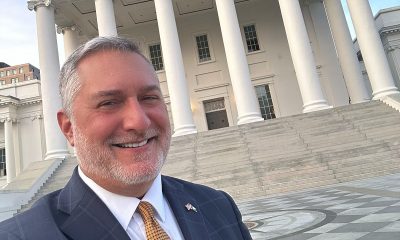
 Virginia3 days ago
Virginia3 days agoYoungkin calls on gay Va. GOP LG candidate to exit race over alleged ‘porn’ scandal
-

 Commentary5 days ago
Commentary5 days agoA conversation about queers and class
-

 Kenya5 days ago
Kenya5 days agoKenya Red Cross-owned hotel to host anti-LGBTQ conference
-

 Opinions4 days ago
Opinions4 days agoNavigating employer-sponsored health insurance, care

